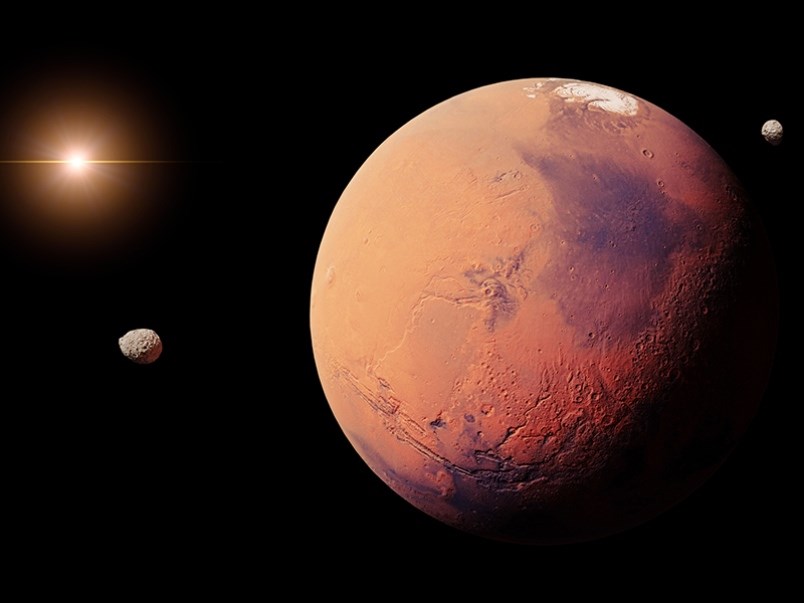Anyone noticing a particularly red star in the sky recently has more than likely been looking at Mars.
During the month of July, Earth and Mars have been getting increasingly closer to one another and will be at their closest point since 2003 beginning this Friday, July 27. Although 15 years might not sound like a particularly long time to some, H.R. MacMillan Space Centre astronomer Kat Kelly assures it will be a once-in-a-lifetime viewing opportunity for many based on the next time the two planets will be this close to one another.
“It hasn’t been this close since 2003 and won’t be again until 2287,” said Kelly. “We’re talking another 260 years before it’s this close again.”
The close approach, described as the celestial event of the year, will begin on Friday and last until Tuesday, July 31. During this time, Earth passes in-between Mars and the sun, putting the two planets near their closest points to each other and making Mars especially brilliant in the night sky.
“In this case it’s going to appear about five times brighter than usual,” added Kelly.
If you want a close-up view, every Saturday night the Space Centre opens up its observatory from 7:30 to 10:30 p.m. Admission is by donation.
Mars has been fascinating people since it was first discovered. In 1877, Italian astronomer Giovanni Schiaparelli claimed to have seen canals on Mars, suggesting there could be possible civilization, or Martians, on the red planet. More recently, SpaceX founder and CEO Elon Musk has been working to make civilization on the planet a reality. Currently, the company intends to send humans to Mars by 2024.
For people wanting to view the planet from the comfort of their own homes, there is no need to go to a particularly dark place or use a telescope to see it. Mars will appear on the horizon at around 9:30 pm each evening, starting in the southeast at the bottom right in relation to the moon, and rise throughout the night.
“It will appear to be a very bright orange star and you’ll be able to watch it creep across the sky,” said Kelly. “All planets look like stars initially, but they don’t twinkle. Stars look like they flicker but the planets are a very steady light.”
To learn more about our night skies, visit the SpaceCentre.ca.




